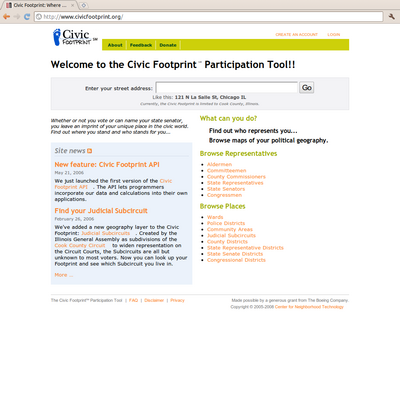Selected projects & work
Rescuing HealthCare.gov
Days after the disastrous initial launch of HealthCare.gov in October 2013, I was asked by the White House to be part of a small new team of technologists to figure out what was wrong with the site and come up with a plan to fix it. Led by U.S. CTO Todd Park, we dove deep into the heart of the site, working alongside the contractors and government agencies who had built it. When we realized the scope and scale of the effort required to turn it around, the stakes if it failed, and the fact that it could be saved, we dropped everything we were doing and spent the next several months working 16 hour days, seven days a week to rescue the site. As 2013 and then the initial open enrollment period drew to a close, enormous progress had been made, and the site was able to enroll millions of Americans in affordable health coverage, many for the first time in their lives. The blow-by-blow story of how this happened has best been told so far by a cover story in TIME magazine by Stephen Brill.
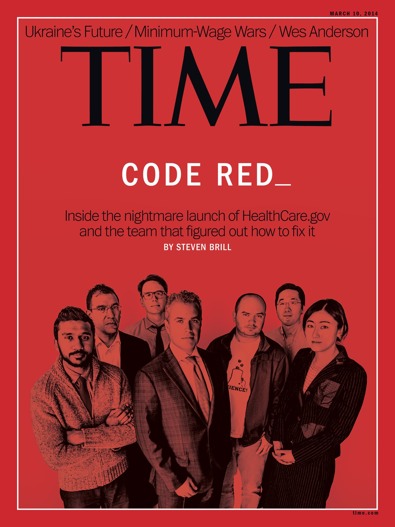
President Obama’s re-election campaign
I was the Deputy Director of Technology at the Democratic National Committee during the 2012 presidential campaign. I oversaw our software engineering efforts and worked to help re-elect President Obama and put Democrats into office across the country. We collaborated closely with the Obama For America 2012 campaign in Chicago, providing technical assistance, institutional knowledge, and developing our own suite of software packages. These were mainly focussed on volunteer and voter engagement, and get-out-the-vote (GOTV) efforts. For example, I led the development of the party’s polling place locator (seen at right), which also powered the Obama campaign’s polling place lookup tool, and handled millions of requests from voters during the GOTV weekend leading up to Election Day 2012. I also created the Digital Slate Card, which gave voters a list of the endorsed Democratic candidates that would be on the ballot where they were registered to vote. I also led efforts to open up more of the source code of the software generated by the party. During the height of the campaign, we released an open source online voter registration application.
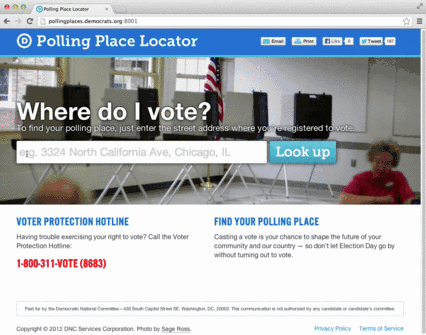
EveryBlock
I co-founded EveryBlock with Adrian Holovaty, Wilson Miner, and Dan X. O’Neil in 2007 in Chicago. I developed the site along with Adrian, writing Python code for the Django-based application, administering the PostgreSQL/PostGIS database, writing JavaScript for various front-end elements including our OpenLayers-based custom maps. We were early users of Mapnik, which we used to create the map tiles. I also developed a custom nginx module to efficiently serve the tiles. I wrote an article about our maps.
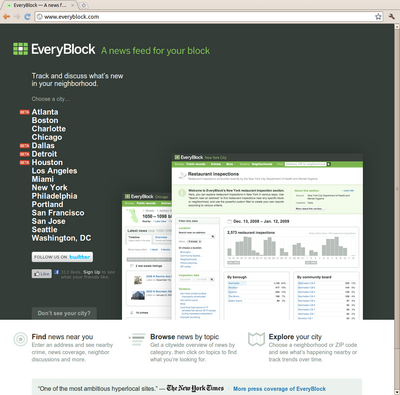
Friends of the Bloomingdale Trail
I co-founded Friends of the Bloomingdale Trail in 2003, an all-volunteer non-profit organization that advocates for the conversion of an unused elevated rail line on the north side of Chicago to a multi-use greenspace and park. I designed and developed the FBT site, which is a Django app.
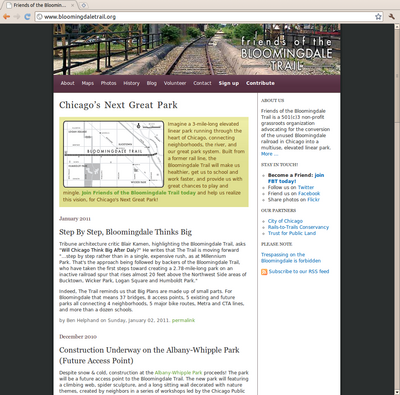
Election Day Advent Calendar
In 2006, my co-conspirator Ben Helphand and I, calling ourselves “Gerrymander” (slogan: Make Small Plans), conceived, designed (with help from Andrew Seay), produced, printed, and sold the Election Day Advent Calendar. Like a regular Advent calendar counts down the days ‘til Christmas, our political-nerd take on it counted down the days leading up to the 2006 midterm election. You opened a door each day and it would reveal a quote or fact about our democracy. This was an actual 11"×17", full-color, printed, die-cut calendar. We sold a fair number, more or less broke even, and declared it a success from our modest expectations. With design help from Melissa Dean, we repeated the effort in with a new calendar for the 2008 election.
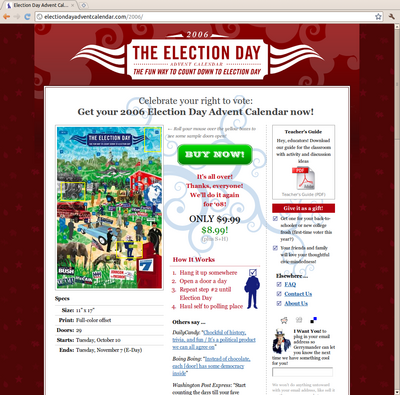
Chris Hayes’ website
I designed and developed another Django app in 2006, a personal site for my friend the journalist Chris Hayes, host of “All In with Chris Hayes” on MSNBC.
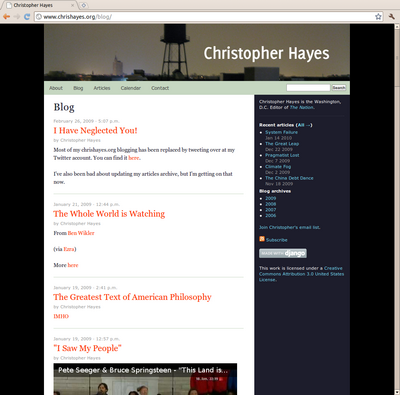
Crain’s sites
As part of my freelance web developer career, I made a number of web apps for Crain’s Chicago Business, based around a news cycle and a data set. One example was Mayor Daley’s Contributions, which let you query a database of contributions made to the mayor in the run-up to the 2007 municipal elections. The contributions were also mapped. This was a Django app.
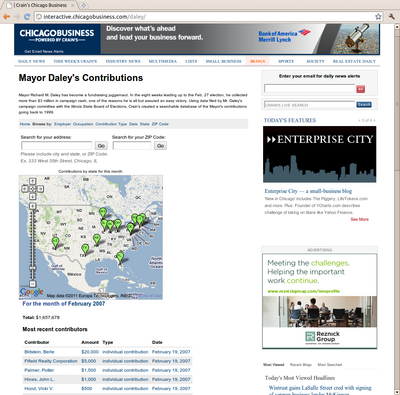
Civic Footprint
I created a site while at the Center for Neighborhood Technology in 2005 called the Civic Footprint. This was a site where you typed in your address, and it showed you who represented you politically, down to the local level (congressman, state senator, alderman, etc.), and a map of all your political geographies. This was an early Ruby on Rails site, and I hacked in geospatial support to ActiveRecord so that I could make queries against the PostGIS database containing the political boundaries. The maps were generated by MapServer.
